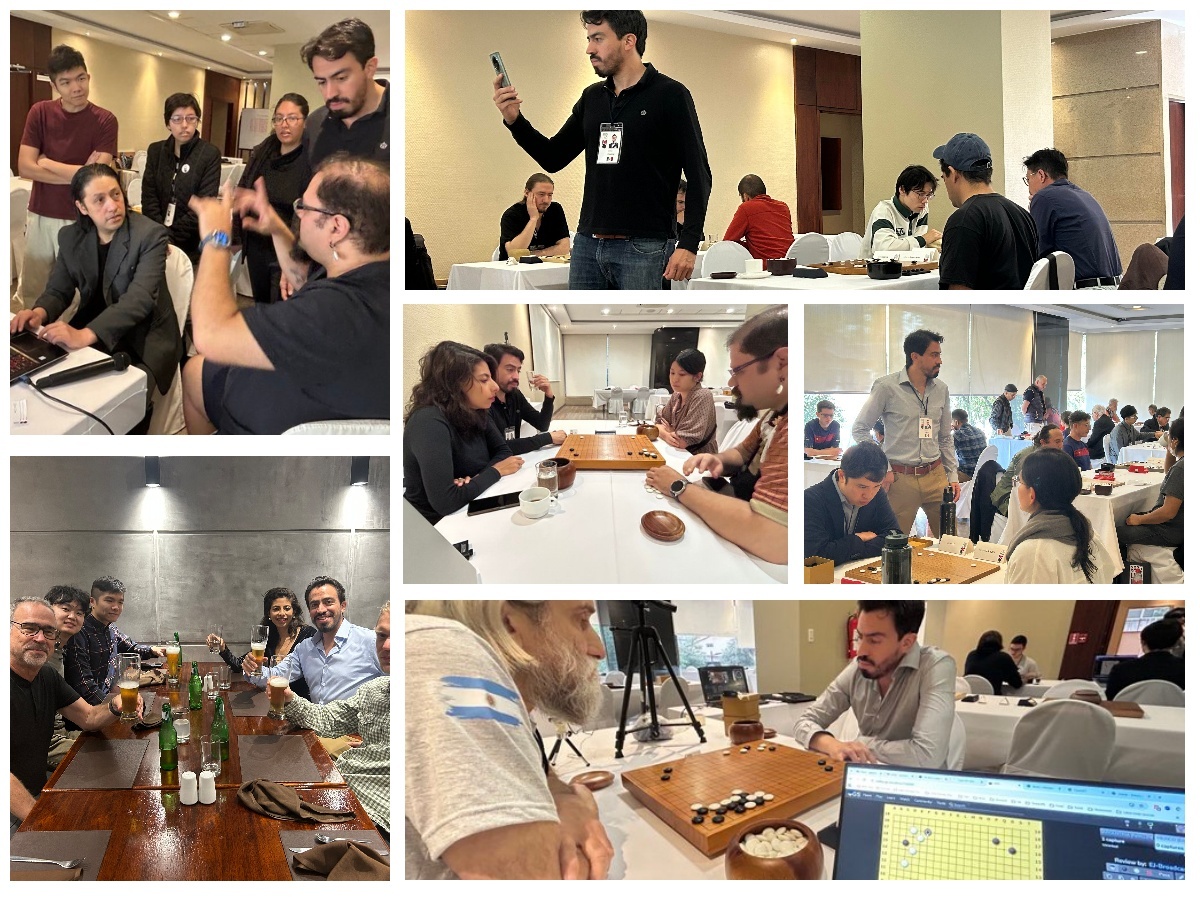By Chris Garlock, American Go E-Journal (Quito, Ecuador)
As play intensified on Day 2 of the Latin American Go Congress in Quito, I sat down with Emil Estuardo García Bustamante, president of both the Ibero American Go Federation and the Mexican Go Association, to talk about Go’s past, present, and future across Latin America.
A Federation Born from Need
“The Federation came together about 20 years ago,” García explained. “At the time, there were only a few active Latin American countries, so Spain and Portugal joined in to help us form what became the Ibero American Go Federation.”
The goal was simple but ambitious: to create a regional organization that could represent Latin America in the International Go Federation (IGF), just as Europe and North America already had.
Today, the Federation includes 15 countries across Latin America and the Caribbean, plus Spain — “a nod to our shared language and cultural roots,” García said. “Ibero was chosen to reflect the Spanish-speaking world, but over time the identity of Latin America has grown stronger. I think that’s where we’re heading.”
The Roots of Go in Latin America
Each country’s Go story is unique. In Mexico, García said, the game arrived in the 1970s, brought back by students who had learned Go while studying in Europe. “They came home and started playing and teaching,” he said. “Even today, one of the main Go hubs in Mexico is the math department at my university.”
Elsewhere, Go’s growth followed other paths. “In Brazil, about half the players are of Japanese descent, and they even have a branch of the Nihon Ki-in,” García noted. “In smaller countries like El Salvador or Peru, Go clubs are just beginning to form, often within the last few years.”
The Federation has never undertaken a full historical survey, but García thinks it’s time. “It would be fascinating to document how Go developed across all our countries — kind of a Latin American Go encyclopedia,” he mused.
Challenges of Distance and Dollars
Unlike Europe, where players can easily travel between countries, Latin American Go faces daunting geography. “We’re separated by mountains, rivers, and thousands of kilometers,” García said. “It’s not so much borders — visas aren’t always the problem — but cost.”
Airfares are priced in U.S. dollars, making travel difficult for players in weaker economies. “In Mexico, a dollar is 20 pesos,” he pointed out. “That adds up fast.”
As a result, much of the region’s activity takes place online. The Federation organizes virtual tournaments — a format popularized during the pandemic but now a permanent fixture. “Our Pandemic League finals were played here in Quito,” García said proudly. “It’s one of the few ways we can bring everyone together.”
Growing the Game
Asked about the Federation’s priorities, García didn’t hesitate. “Number one: increase the number of players,” he said. “We can’t have strong players without a large base.”
The Federation supports its member countries with funding from sponsors in China and Japan, helping organize events, workshops, and congresses. “When we reach a critical mass,” García said, “the strong players will naturally emerge.”
Go’s link to chess has also helped. “Many Go players in Latin America started as chess players — myself included,” García said. “The founders of the Mexican Go Association were strong chess players who discovered Go through their travels. They realized it was even more fascinating.”
From Chessboard to Go Board
For García, the path to Go began in an unexpected place — the 1998 film Pi. “I saw Go in that movie and thought, ‘What is that? It looks amazing.’ That was the spark,” he said.
Since then, he’s represented Mexico and Latin America at tournaments around the world, including the World Mind Sports Games in Beijing (2008) and multiple KPMC and U.S. Go Congresses.
Now in his 40s, García still juggles leadership of both the Mexican Association and the Ibero American Federation — though he’s eager to pass the torch. “We need to create not just more players, but more organizers,” he emphasized. “Knowing how to set up a clock, run a tournament, or manage a congress is just as important as knowing how to play.”
A Simpler, Stronger Congress
Reflecting on this year’s Congress, García said the focus was intentional. “We kept it simple — just the Open, Youth, Women’s, and Pair Go Championships, plus a few pro lectures and reviews,” he said. “It’s tight, but it works.”
And he’s quick to credit inspiration from abroad. “When I first went to the U.S. Go Congress in 2007, it showed me what was possible,” he said. “This event is built on that model — a place where pros, youth, and fans all come together. That’s what keeps our community growing.”
Collage (top left): Garcia consulting on Congress pairings; (top right) shooting Congress video; (center) playing Pair Go with wife Dafne Rios; (center right) doing a walk-through of the main Congress playing area; (bottom right) leading Mexico’s team in the Pandanet City League final; (bottom left) a rare moment of relaxation of the double president. Photos/collage by Chris Garlock.
Photos and full coverage from the Latin American Go Congress available at: https://www.usgo.org/news
Follow updates on X: @theaga | Facebook: American Go Association